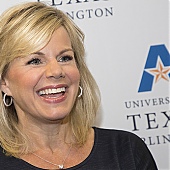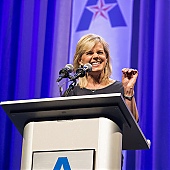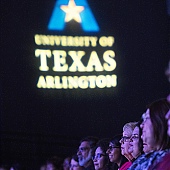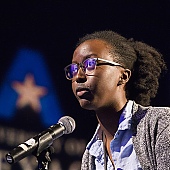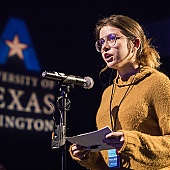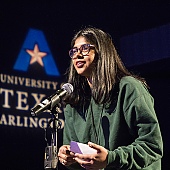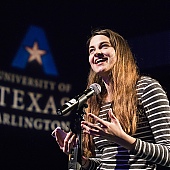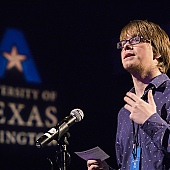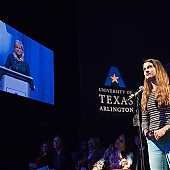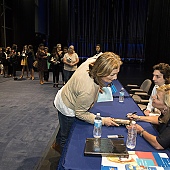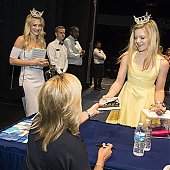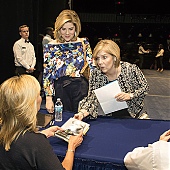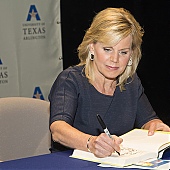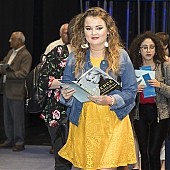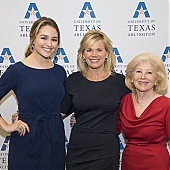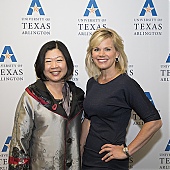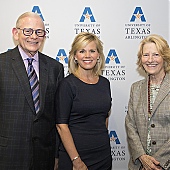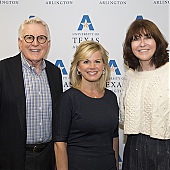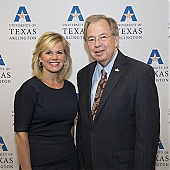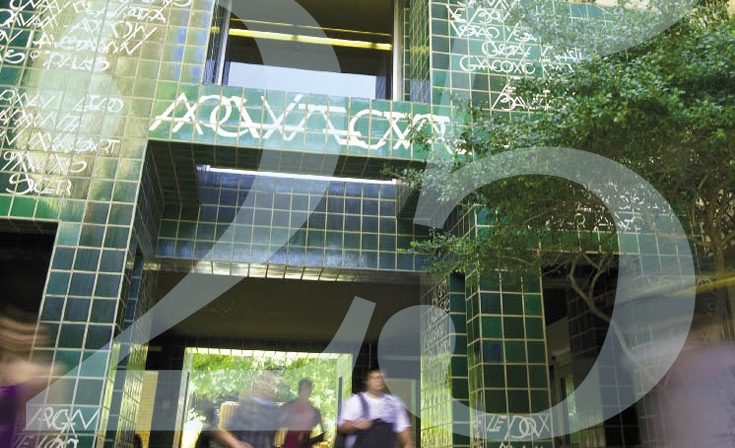
Hidden Treasures
OK, so some of these things are in plain sight (it’s the stories behind them that will amaze you). Others are far off the beaten path—even invisible to the naked eye—but just as interesting. They all have one thing in common: They’re unique to UT Arlington. In no particular order, here’s our unofficial, totally subjective, somewhat useful list of 25 unsung campus gems.
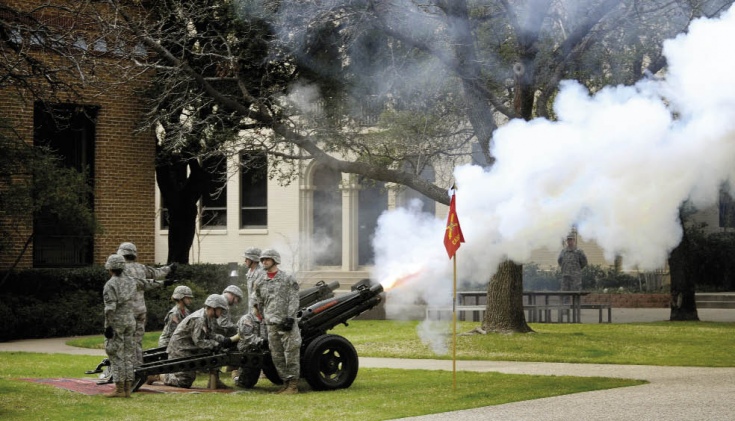
BIG BANG THEORY
If another university tries to invade the campus, fear not: We have major firepower. UT Arlington owns three Korean War-era 75mm pack howitzer cannons. The artillery tradition began when UT Arlington was known as North Texas Agricultural College and ROTC participation was mandatory. NTAC had one cannon, the euphonious Little Bertha, which was fired mostly at football games, but it disappeared during the Arlington State College years and wasn’t replaced. In 1983 the Corps of Cadets brought back the bang, acquiring six cannons: Little Bertha IV, Molly Pitcher, Gabriel, Damien, Munden’s Muzzle, and Roaring Rebel III. Collectively known as the Carlisle Cannons, they fired shots at 24 University events annually and helped set the clocks on campus after daylight savings time. In 2001 the University disbanded the cannons due to budget concerns, donating five of the six to other institutions. Bertha stayed. By 2009 the Military Science Department had reacquired two of the weapons. Today an ROTC student organization maintains the three cannons, which are fired on special occasions.
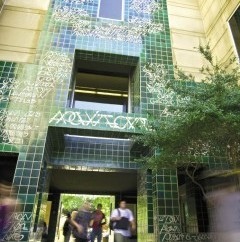
WRITING ON THE WALL
Frank Lloyd Wright is hiding on campus. Michelangelo and Le Corbusier, too. To find them, head to the Architecture Building, where the names of these and other famous architects are inlaid on green tiles lining the breezeway. The eye-catching decorative element was conceived by the building’s designers—Pratt, Box, Henderson, and Partners—as a way to pay homage to the masters. The Dallas architectural firm also created the highly stylized font in which the names are written. Graffiti never looked so good.
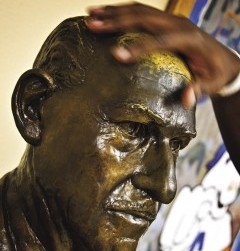
HEAD CHECK
Students wanting to ace a test often visit the bust of a former UT Arlington president. Legend has it that those who rub the head of E.H. Hereford’s statue in the University Center do better on exams. Years of hopeful hand swipes have left a brighter patch of bronze on Old Rosebud, so nicknamed because he often wore a rose on his lapel.

A GRAVE LOCATION
Doug Russell Park is a great place to relax and catch up on your reading, but note the plaque commemorating its earlier use as a home for unwed mothers. A small cemetery in the park’s northwest corner contains more than 80 graves. In 1894 the Rev. J.T. Upchurch organized the Berachah Rescue Society in Waco to protect homeless girls and unwed mothers. Nine years later, he opened the Berachah Industrial Home in Arlington. It closed in 1935, but the site at Cooper and Mitchell streets was used until 1942 as an orphanage run by Upchurch’s daughter and son-in-law.


IT’S A GAS GAS GAS
UT Arlington sits on a sweet spot within the Barnett Shale, one of the largest natural gas fields in the nation. To maximize this resource, the University partnered with Carrizo Oil & Gas, which has completed 22 wells at a single site on the southeast corner of the campus. The collaboration has generated $8.8 million in royalties since the wells went into production in late 2008. Through the Maverick Match program, UT Arlington leverages the royalties to improve educational opportunities for students and benefit the greater University community. In addition, Carrizo has donated $5 million to support College Park Center and $1 million to establish a graduate research fellowship.
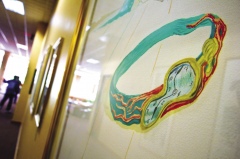
MAKESHIFT MUSEUM
Who needs the Kimbell? Original artworks by Picasso, Dali, and other artists hang in the University Center, all donated by political science Associate Professor Allan Saxe. You can experience nearly a dozen drawings, watercolors, and prints in a hallway on the second floor near the Carlisle Suite and Guadalupe Room. No curator necessary.
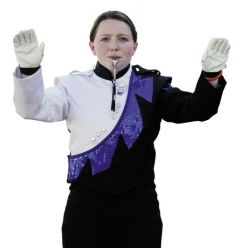
HALFTIME ALL THE TIME
When the University ended football in 1985, the band played on. The marchers now serve as UT Arlington ambassadors and execute exciting shows on the field. Almost 130 students participate in the Maverick Marching Band, which performs at exhibitions, competitions, festivals, and football games around the region. The most notable appearance came in 2009, when the band performed at halftime in Cowboys Stadium. The Mavericks rocked; the Cowboys lost.

THE 411 ON UTA
Want to read a brief history of UT Arlington? Don’t go to the Central Library—go to the flagpoles outside. A historical marker provides 100 years of history in fewer than 200 words. The Texas Historical Commission erected the plaque in 1995, which coincided with the University’s centennial observation. The marker outlines the University’s evolution, starting in 1895 with Arlington College and continuing to today’s thriving research institution. If only all history lessons were so efficient.

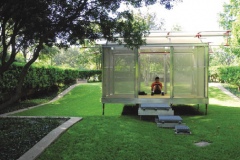
TEA TIME
Quiet places can be hard to find on a bustling campus, but the Tea House in the architecture courtyard is one such sanctuary. Designed and built by architecture students, the translucent structure is a modern take on the traditional Japanese form. While you may find peace there, the tea is on you.
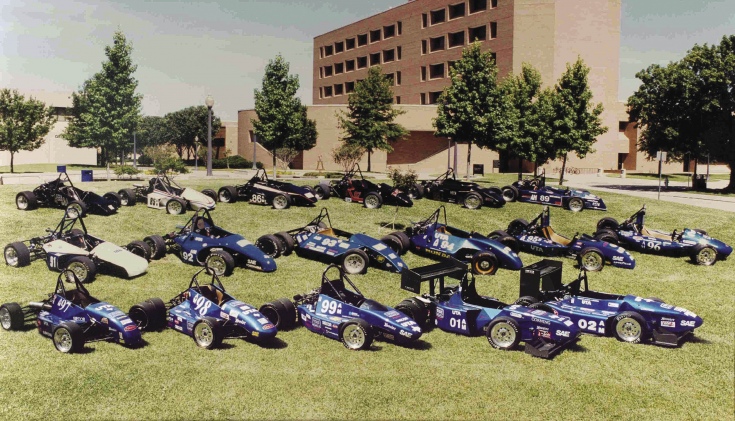
NEED FOR SPEED
Most universities urge students to take it slow on the roads. At UT Arlington, we help them race. Every year our Formula SAE (Society of Automotive Engineers) team designs, builds, and races cars at competitions around the globe. Since 1981 the team has taken first place in eight contests in the United States, plus others in England, Australia, and Japan. Three of the retired cars hang in the Nedderman Hall atrium, and others are parked in Woolf Hall. No, you can’t drive one. Watch a video about Formula racing at UT Arlington.

ONE, TWO, THREE STRIKES YOU’RE…
…probably a really good bowler. You can polish your game at Bowling & Billiards, a high-traffic, high-energy University Center destination. It offers a 12-lane bowling alley with automatic scoring, a nine-table billiard hall with regulation-sized tables, a snooker table, large-screen televisions, and a game room featuring foosball and darts.

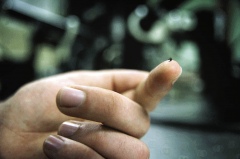
MORE THAN MEETS THE EYE
The next time you get your hair cut, think research at UT Arlington. Our Automation and Robotics Research Institute houses a system of nanorobots that can construct novel materials 1,000 times smaller in diameter than a human hair. Researchers can tailor-make nanomaterials that one day may revolutionize the defense, energy, and medical industries. The system could be used to build ultra-sensitive sensors that detect tiny volumes of dangerous chemicals and to create products that enable faster medical diagnoses and noninvasive surgical techniques. The nanomaterials also could improve the efficiency of energy storage and conversion.
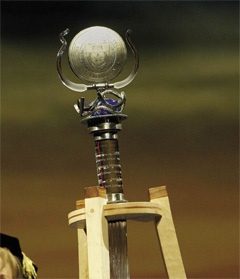
PROCESSION PROP
“Presentation of the mace” listed in a commencement program references neither tear gas nor Medieval weaponry but a scepter-like object carried at the head of academic processions as a symbol of authority. The mace dates to the 14th century, when similar items were used to herald royalty, mayors, and university leaders. UT Arlington’s version, created by art Professor David Keens, features the school colors, an etched metal seal, a wreath, a forged metal nest, and glass engravings of the University’s former names. Anyone who drops it may be Maced.
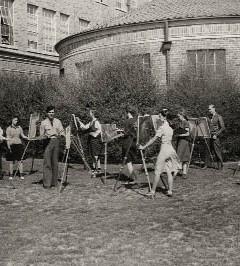
FROM CATTLE TO COMETS
Livestock and giant telescopes have both called the Roundhouse home. Built in 1928, the circular building adjoining the south side of Preston Hall originally was intended for presenting livestock. Seats inside were positioned along the walls, and the floor was depressed to enable better viewing of the animals. The facility also functioned as a slaughterhouse, but once the college’s Agriculture Department moved out in 1940, the Roundhouse’s affiliation with cattle ended. Over the next several decades, the building would house art classes, History Department offices, an art printing lab, and a planetarium. While the 2006 opening of the dazzling Planetarium in the Chemistry and Physics Building diminished this role, the Roundhouse is still used as a secondary dome for hosting small shows and the occasional astronomy class.

POTTY HUMOR
Shakespeare aficionados can have their round Globe Theatre, UT Arlington has something better: a toilet-shaped one. Though you won’t notice it today, the Mainstage Theatre’s distinct design garnered attention in its first decade, before the Fine Arts Building was constructed around it. The performance hall comprises two sections: a large, rectangular structure housing ropes and pulleys for the backdrops and a half-oval for the seats and lobby. Put the two together and squint, and you may just see a toilet tank and bowl. Upon completion in 1965, the facility provoked double takes and nicknames like the Jolly Green Giant’s john. Two years later, fraternity members, working stealthily and with purpose, hung a 12-foot handle over the side in the middle of the night. Flush with consternation, administrators had it removed the next day.

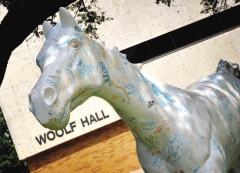
HORSE OF A DIFFERENT COLOR
Three colors, to be exact. On the Library and University Center malls, you’ll find large, white, fiberglass horses adorned with handprints, signatures, Greek letters, and messages of Maverick pride. Following the MavsMeet AfterParty, an event welcoming students to campus each fall, new Mavericks decorate the horses in shades of orange and blue. The tradition started in 2009. “The goal is to continue adding these to the stampede around campus,” says Seth Ressl, director of Greek Life and University Events. Watch a video of the decorations.
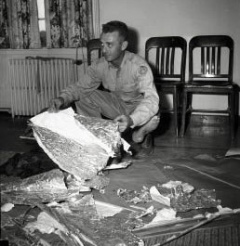
OUR VERY OWN X-FILES
In July 1947 something mysterious crashed outside Roswell, N.M. We may never know what really happened, but photographs from the Star-Telegram collection, part of the UT Arlington Library’s Special Collections, may offer clues. The images, which were taken at the Fort Worth Army Air Field by J. Bond Johnson, are among the most frequently requested items in Special Collections.
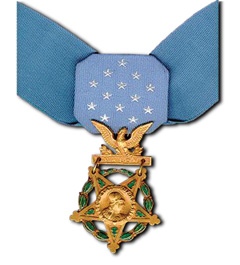
BEYOND THE CALL OF DUTY
How many universities have a Medal of Honor on display? Alumnus Neel Kearby was a decorated World War II fighter pilot before he was killed in action. His numerous awards included the Medal of Honor, the nation’s highest military recognition for valor in combat. Col. Kearby’s family donated the medal to the University, and it hangs in College Hall.

IT’S NOT EASY BEING GREEN
Certainly not in the heat of brutal Texas summers, but UT Arlington has managed to make it work. A green roof, believed to be the first of its kind in the Dallas-Fort Worth area, crowns the Life Science Building and serves to reduce and clean runoff, limit the urban heat island effect, provide a park-like respite, and trim heating and cooling costs. Erected in 2008, the roof uses minimum growing materials, little irrigation, and low-maintenance plants to achieve the maximum environmental benefit with the smallest consumption of resources. Green roofs also were incorporated into the design of the recently opened Engineering Research Building, which earned LEED Gold certification.

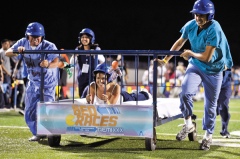
DREAM ON
It certainly sounds like a dream, if an odd one, racing along football stadium turf in a bed on wheels. Don’t pinch yourself. That’s exactly what happens at the Bed Races, a Maverick tradition since 1980. Teams of five—four pushers and a rider—compete for the fastest time. No sleeping allowed.
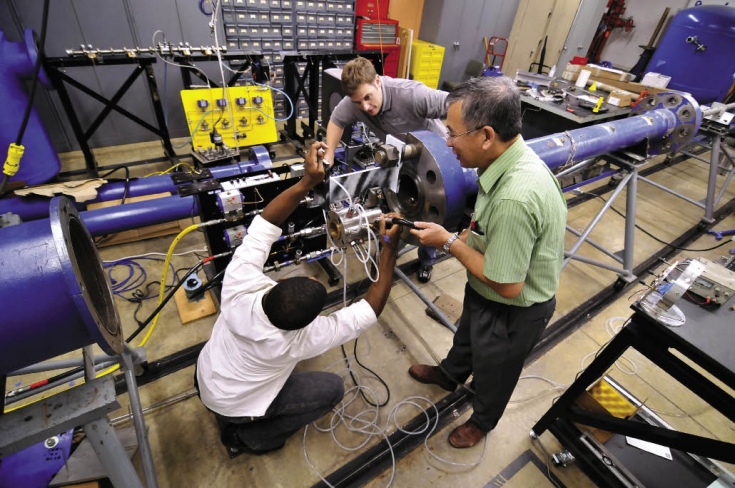
THE ANSWER IS BLOWIN’ IN THE WIND TUNNEL
UT Arlington’s transonic wind tunnel is the only one of its kind in the country. A gift from the Air Force, it weighs about 40,000 pounds and can generate air speeds of 350–900 miles per hour. So don’t stick your hand in it, advises aerospace engineering doctoral student Eric Braun, who works in the Aerodynamics Research Center, where the tunnel is housed. Researchers use the transonic tunnel to investigate aircraft designs. Its high-pressure capabilities allow small models to accurately predict the performance of full-size aircraft components. Sponsors have included the Army Research Office, Lockheed Martin, and Bell Helicopter. The center also has a supersonic wind tunnel, a hypersonic wind tunnel, an arc jet tunnel, and several small-scale and low-speed tunnels.
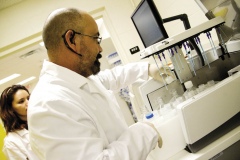
GENETIC PRECISION
It’s called the Roche GS FLX 454 sequencer. If the name alone doesn’t impress you, its capabilities will. Tucked away in a sixth floor office of the Life Science Building, this state-of-the-art instrument is so precise that one person could sequence the entire human genome anew in 33 days. Biologists and other researchers use it to help illuminate genomic changes that make people susceptible to diseases. UT Arlington is the only university in North Texas with a Roche 454.

HOMER TIME
Though a certain cartoon character has hogged the Homer-related spotlight over the past decade, the original bard still gets his due every year during the Homerathon. Starting at dawn, students, teachers, and assorted zany classicists gather on the University Center mall to take turns reading from Homer’s The Odyssey. The epic work details Odysseus’ long journey home after the Trojan War. The recitation lasts all day and includes costumes, dead languages, and plenty of throat lozenges.

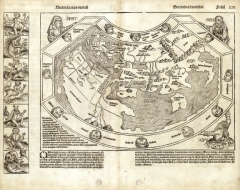
NOW THAT’S OLD!
In 1492 Columbus sailed the oceans blue. In 1493 Hartman Schedel published a map in Nuremberg, Germany. “Secunda etas mundi; secunda etas müdi” (“the second age of the world”) depicts the world divided among the descendants of Noah’s three sons. The map is part of the Virginia Garrett Cartographic History Library and is the oldest published item in UT Arlington’s Special Collections, housed in the Central Library.
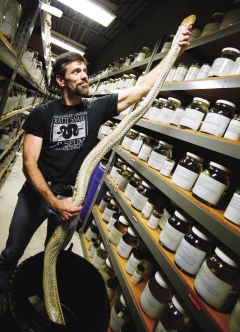
SPECIMEN SANCTUARY
Far from public view on the southwest side of campus resides one of the best herpetological collections in the United States. Founded in 1956, the Amphibian and Reptile Diversity Research Center houses gigantic alligator snapping turtles, tiny Mexican mole lizards, and an impressive king cobra, unfurled above by biological curator Carl Franklin. The center boasts some species now considered extinct among its more than 130,000 specimens from 90 countries. It also has audio recordings of frog calls, photographs, and a comprehensive library. These resources have proved to be invaluable for researchers around the world—and for fans of scaly, slimy things. Watch a video to learn more.
